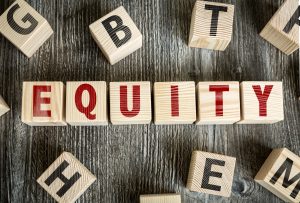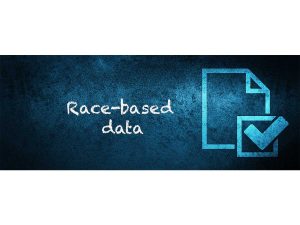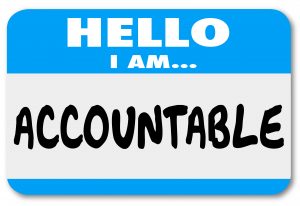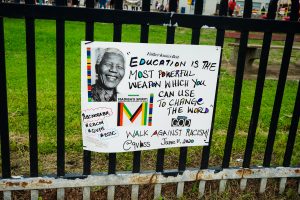Anti-racism policy – beyond running surveys and ticking boxes
Where’s the beef?
In its recently published: “A progress report on anti-racism policy across Canada” advocacy group, People for Education (P4E) makes useful observations, but pulls up a little short on any sort of critique of what it’s seeing.
The report explains why anti-racism is important, citing the discovery of unmarked graves at former residential schools in Canada and the growth of Black Lives Matter in response to police brutality against Black, Indigenous and other racialized people. It notes the high rates of disciplinary measures meted out for Black students and the historic tendency for these kids to be streamed into lower level courses in high school.
It says we need to:
- name race and racism as driving factors on outcomes for different racial groups
- recognize how racism is embedded in society and the systems and institutions that affect it
- understand how people need to be treated differently for equality to happen
It should have gone further.
Anti-racism, across Canada
There are some interesting details in the P4E report. Across the country only 6 of 13 provinces and territories have developed plans or policies to deal with anti-racism. Of those only B.C, Ontario and Nova Scotia have actually passed some form of anti-racism legislation. B.C introduced the Anti-Racism Data Act developed with Indigenous people, to shed light on systemic discrimination faced by Indigenous, Black and other people of colour. Last year, the Nova Scotia government passed An Act to Dismantle Racism and Hate which mandates among other measures, “specific initiatives” the government will put forward to address issues of “systemic hate, equity and racism” and a vaguely worded “health equity framework” to be developed by Black, Indigenous and other people who have experienced hate, inequity and discrimination.
plans or policies to deal with anti-racism. Of those only B.C, Ontario and Nova Scotia have actually passed some form of anti-racism legislation. B.C introduced the Anti-Racism Data Act developed with Indigenous people, to shed light on systemic discrimination faced by Indigenous, Black and other people of colour. Last year, the Nova Scotia government passed An Act to Dismantle Racism and Hate which mandates among other measures, “specific initiatives” the government will put forward to address issues of “systemic hate, equity and racism” and a vaguely worded “health equity framework” to be developed by Black, Indigenous and other people who have experienced hate, inequity and discrimination.
Official efforts to fight racism in Ontario go at least as far back as 1992 with Stephen Lewis’ report on race relations for the NDP government of the time. But it wasn’t until 2017, that the Liberal government passed the Anti-Racism Act which acknowledged and defined systemic racism and promised to “maintain an anti-racism strategy that aims to eliminate systemic racism and advance racial equity.”
It’s worth noting that, last April, a bill failed to pass in the Alberta legislature to require government departments to collect race-based data and report improvements on equity. NDP MLA David Shepherd, who sponsored Bill 204 said having access to such data would empower Indigenous communities. Not in Alberta.
More about Ontario
People for Education describes “significant variability” amongst Ontario’s 72 school boards and how they deal with anti-racism and equity. Seventy-four percent of school boards mentioned racism on their websites, while 40 percent put up an anti-racism message and 28 percent described an anti-racism plan on their websites. As of last summer, 67 percent of school boards had conducted a census to get an idea of the background and identities of their students and 28 percent had done something similar for staff. Of all Ontario boards, 25 percent had asked parents and families about their perceptions of school life and 54 percent had delved into school climate – how safe and supportive students feel in their schools.
 According to the P4E report, 64 percent of Ontario principals reported that they collected race-based and/or demographic data on their students, though 7 percent said they didn’t collect this information and 29 percent weren’t sure.
According to the P4E report, 64 percent of Ontario principals reported that they collected race-based and/or demographic data on their students, though 7 percent said they didn’t collect this information and 29 percent weren’t sure.
An overwhelming majority of the administrators who answered an optional question on a 2021-22 questionnaire identified as white (86.7 percent), followed distantly by Black principals at only 5.2 percent. This is in stark contrast to the reality in Ontario where people from visible minorities make up just over 29 percent of the population. As P4E argues, it’s useful to have this kind of information so you can sort out how these figures came about and plan to meet the challenges they present.
These include matters like school staff acceptance of the need to do the personal work in order to “recognize systems, policies, and power, as the root of racial inequality.” People for Education wants policy makers to be more open about naming the problem since that will signal an understanding of anti-racism. It wants them to collect and report more data and consult with groups historically affected by racism and increase the number of school climate surveys. Schools need to go beyond that and build “partnerships with individuals, groups and community organizations who have been historically impacted by discrimination.”
This is all well and good, but falls flat in the cold world of neoliberal policies and their effect upon schools and communities. People for Education is arguing that systemic responses like more surveys, are enough to deal with the problem of systemic racism. The trouble is, you can evaluate the system all you want and carefully note its progress and deficiencies, but if you don’t have the money, support or political will to change anything about it, all you have is elegantly documented window-dressing. It’s the old form versus substance issue.
To discuss racism, you need context. In 2018 the Ford government cut $25 million across the province for special programs that allows kids to get involved with after-school activities in low-income areas – something that addressed racism by giving kids a boost. The report doesn’t mention that the Tories sent the Indigenous curriculum writing team packing soon after they took office. Since then the government has continued to cut education, stand pat on health spending, privatize some surgical procedures, allow landlords to greatly increase rents, cap wages – that’s just a taste of what has been going on these past few years. It doesn’t acknowledge how strapped school boards have become for basic resources and staff to help students cope with everyday school life. It doesn’t touch on related issues of insecure living, sufficient food to eat and galloping inflation – all of which feed the system of systemic racism. How do you promote anti-racism and anti-oppression with a government whose true constituents do not include those without money or power?
This is a government willing to go through the motions of anti-racism, but not very committed to action that doesn’t fit into its vision of education – to prepare students to get a job and be good consumers.
What else could be done
The People for Education report references former NDP leader Stephen Lewis’ report on race relations a generation ago. It might have added this comment he made about ensuring that something actually happens with regard to anti-racism in schools: “…the crucial thing is to monitor the performance of superintendents and principals and individual teachers and if the performance evaluations fall short, then action will have to be taken.”
 Just a couple of months ago, students at York-Memorial CI in Toronto staged walkout protesting the health and safety disaster that ensued when two schools were merged without adequate preparation for students and staff. Students called out racism on the part of some teachers and demanded an inquiry into “systemic abuse” at the school. The real test of the Toronto DSB’s anti-racism policies will come with the way it holds accountable all those responsible for the mess.
Just a couple of months ago, students at York-Memorial CI in Toronto staged walkout protesting the health and safety disaster that ensued when two schools were merged without adequate preparation for students and staff. Students called out racism on the part of some teachers and demanded an inquiry into “systemic abuse” at the school. The real test of the Toronto DSB’s anti-racism policies will come with the way it holds accountable all those responsible for the mess.
It would have been great to see examples of the kind of things schools and communities can actually do beyond naming the problem and recording data with community partners. In his 2017 report York University professor Carl James offered concrete options like recognizing teachers who promote equity and involvement of students in their communities. He said school councils should have real power – rather than just advisory status – to oversee school curriculum and discipline. Among other recommendations, he added that administrators should enforce discipline policies on students involved in peer to peer racist behaviour while suspending or expelling students under only the most serious circumstances. Also, at a time when schools are moving to destream high school students, he called for more support for those falling behind their peers as well assistance for groups that help Black and other racialized kids deal with authority and racism. For example, look at the work of For Youth Initiative, Success Beyond Limits and Youth Association for Academic, Athletics and Character Education (YAAACE).
The P4E report could have highlighted the struggles of parents in communities like Peel and Vaughan in countering racism- in particular the hard work that went into getting a local high school’s name changed from that of a long dead slave owner, Benjamin Vaughan, to one honouring respected journalist, Hodan Nalayeh. It would have been great to see the names of organizations like Parents of Black Children, Jane-Finch Action Against Poverty or Black Students for Success Committees in Toronto who do heavy lifting in their communities to hold institutions and individuals accountable for racism.
Why not point out the extensive curriculum and organizing resources of groups like the First Nations Metis and Inuit Education Association of Ontario (FNMIEAO) or the Orange Shirt Society? Its founder Phyllis Webstad, gave us Orange Shirt Day, one of the most powerful events to bring to light the horrors of residential schools and remind us that “Every Child Matters.”
What’s important here is that there is hope to be found amongst all of the groups across the country who, despite political and bureaucratic roadblocks, have the energy and determination to fight racism. That organizational dynamism is as critical to change as it is exemplary.
Critical Education
Curriculum ought to be front and centre in any report racism. Surely the hope in making any meaningful and lasting change lies with young people, their knowledge and attitudes.
 The Orange Shirt Society has an entire kindergarten to grade 6 curriculum, written by Alberta teacher, Robin Drinkwater, which deals with why children matter- in communities, and their families and what it means to be a stranger in a community. By grade 6 students are starting to learn about residential schools and how their horrific history was conveyed by white educators in the 1950’s. The FNMIEAO offers secondary school credit courses aimed at teaching students about issues like colonialism, genocide and making alliances for change.
The Orange Shirt Society has an entire kindergarten to grade 6 curriculum, written by Alberta teacher, Robin Drinkwater, which deals with why children matter- in communities, and their families and what it means to be a stranger in a community. By grade 6 students are starting to learn about residential schools and how their horrific history was conveyed by white educators in the 1950’s. The FNMIEAO offers secondary school credit courses aimed at teaching students about issues like colonialism, genocide and making alliances for change.
Just last night, the Toronto DSB replaced a compulsory grade 11 English course with one that focuses, not on Shakespeare, Dickens and others, but on Canadian Indigenous writers like Richard Wagamese, Tanya Talaga and Leanne Betasamosake Simpson. This motion was introduced to the Board as a result of a push by student trustee Isaiah Shafqat. Here is something to write about.
Then there’s the course written by TDSB teachers Tiffany Barrett, D. Tyler Robinson, Remy Basu and Kiersten Wynter. It introduces topics like the language of racism, the concept of race and racism as a means to dehumanize a whole people in order to enslave them and exploit their free labour. This is critical race theory and fundamentally challenges white history and the motivation of its teachings. The course contributes to a multi-centric rather than Euro-centric view of knowledge – that science, mathematics, philosophy, literature and creation stories come from all corners of the globe. It asks kids today: “What do you see in the broader picture of anti-Black racism? What makes you see that, what do you think and feel about that?” This is not your dry history course; it’s really useful learning.
D Tyler Robinson is one of the authors of the curriculum. He spoke to me about the kind of political will that must underlie any real challenge to racism. Why, he asks, is it up to individual boards to create their own anti-racism and equity policies when this is actually one of the appropriate places for the government to show leadership? The government funds education, mandates curriculum, sets standards, employs a huge agency like EQAO to monitor reading and math. It should exercise leadership in how teachers answer fundamental questions about our colonial past of stolen lives and stolen lands. It should be at the front of the line in making sure that students understand institutional and systemic racism and the position of whiteness as the default normal.
Mr. Robinson thinks Education Minister Stephen Lecce is making the miscalculation of catering to a small, right wing group of Tory voters who just don’t like topics like critical race theory, despite the likelihood that there are plenty of conservative voters who realize it’s time to talk about race and racism and our colonial past and its effects on people today. There just isn’t the leadership within the Ministry of Education to go beyond “throwing breadcrumbs” – some money for local initiatives. We need leaders who will “search for the needs of the great political many.”
For now, the hope for real change lies within local communities and people determined to act in alliance with one another as they realize what is coming down the line with regard to racism, poverty, homelessness and dismantling responsible government. There’s plenty more than statistics to talk about.

Endnote:
“Multicultural or anti-racist education is fundamentally a perspective. It’s a point of view that cuts across all subject areas, and addresses the histories and experiences of people who have been left out of the curriculum. Its purpose is to help us deal equitably with all the cultural and racial differences that you find in the human family. It’s also a perspective that allows us to get at explanations for why things are the way they are in terms of power relationships, in terms of equality issues.
So when I say multicultural or anti-racist education, I am talking about equipping students, parents, and teachers with the tools needed to combat racism and ethnic discrimination, and to find ways to build a society that includes all people on an equal footing.” – Enid Lee, anti-racism educator interviewed in Rethinking Schools – 1991

